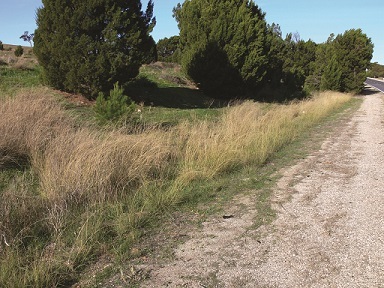Pest plant - African lovegrass
- Fact sheet
- August 2015

African lovegrass (Eragrostis curvula) is a perennial tussock grass that competes with other grasses, annuals and perennials. It has high seed production, a high germination rate and is difficult to control with herbicides or management practices.
Description
- perennial grass, forms dense tussocks 30-120cm high
- leaves are dark green–blue green and rough, 30cm long and 3mm wide
- the sheath at the base of each leaf is smooth and there is a ring of hairs at the opening of the sheath
- flowering stems are slender and arching, ending in loose, finely branched tufts 10-30cm long
- seeds are 1 mm long and cream to brown in colour when ripe
- root system is shallow and fibrous
Why is it a problem?
- competes with other grasses, annuals and perennials, and can form dense stands excluding other species
- high seed production, high germination rate and difficult to control by herbicides or management practices
- abundant on open grasslands on light sandy soils
- invades disturbed areas such as roadsides
Distribution
- Eyre Peninsula – isolated patches
- Northern pastoral – isolated plants on roadsides.